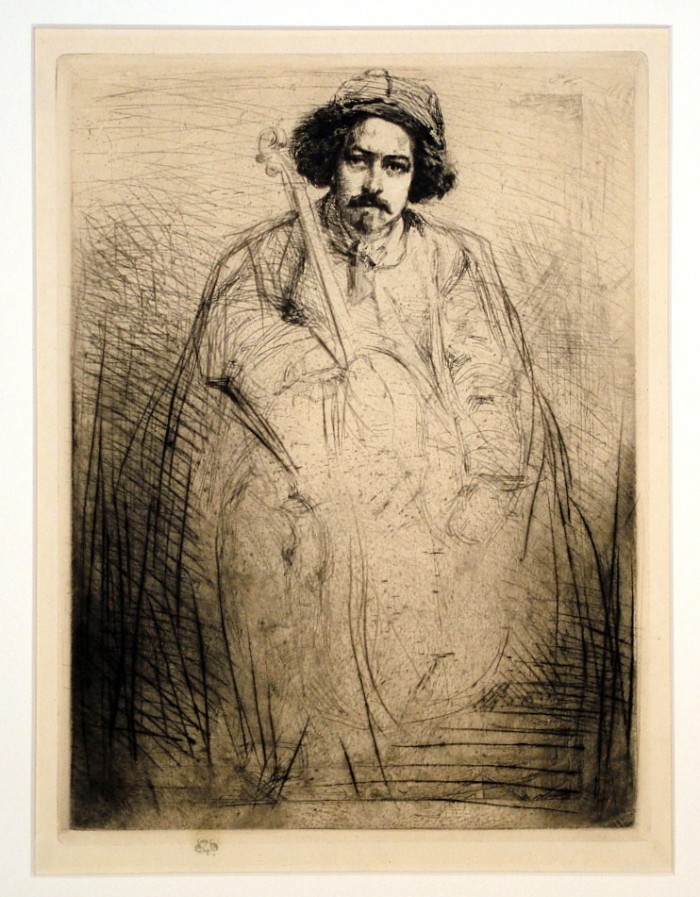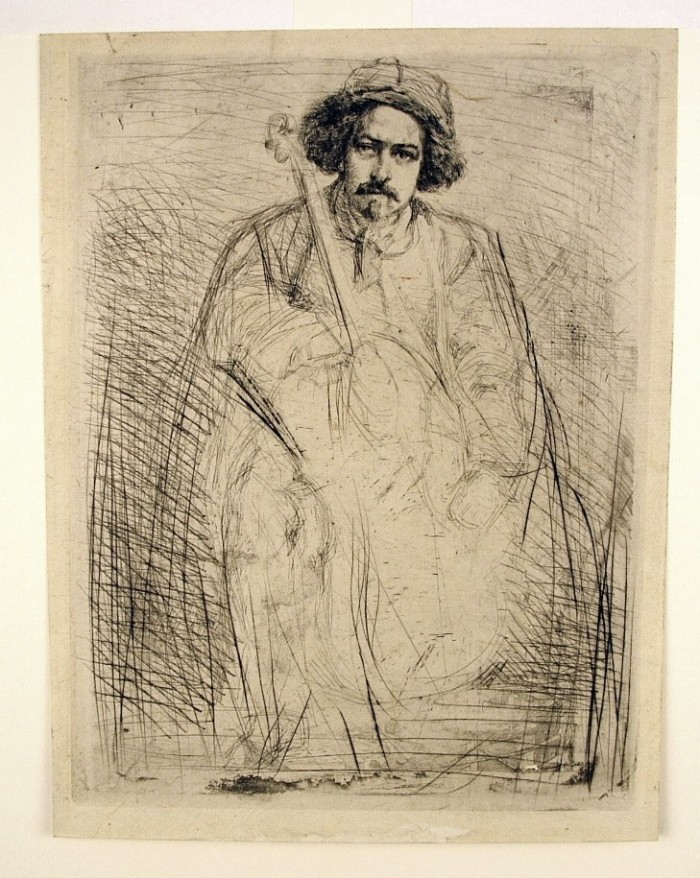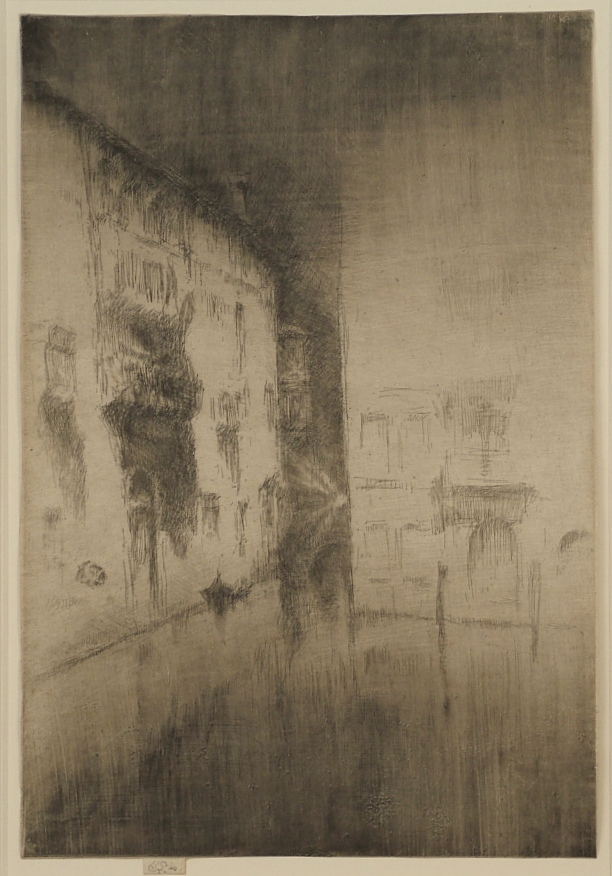Gants de Suede
Friday, May 24th, 2013James McNeill Whistler (1834-1903), Gants de Suede, lithograph, 1890, signed in pencil with the butterfly lower left [also with the artist’s butterfly signature in the plate]. Reference: Spink, Stratis and Tedeschi 35. In good condition, with slight evidence of pale mat staining, pinhole toward bottom edge. 8 1/2 x 4 1/8, the sheet 12 1/2 x 8 3/16 inches.
Provenance:
Kennedy Galleries, with their stock number (a23958) recto.
Estate of Marie D. Powers (acquired from above, 1974)
A fine lifetime impression.
Printed on a cream laid paper with the watermark IV, Spink et al’s Watermark number 191 (IV countermark to Seven Provinces, nos. 273,274), identified as a lifetime watermark characteristic of the pre-publication lifetime impressions of Gants de Suede.
Gants de Suede is a portrait of Whistler’s sister-in-law, Ethel Birnie Philip. Whistler was apparently pleased with this lithograph, for after a small number of impressions were printed he agreed that it could be published by The Studio, an art magazine that had recently been launched. The present impression is before this larger edition.
Spink et al note: “By manipulating several lithographic crayons, Whistler achieved a range of subtle tonalities and a convincing sense of the figure’s plasticity in Gants de suede. These qualities were most fully realized in the impressions Thomas Way printed by hand from the original stone.”






